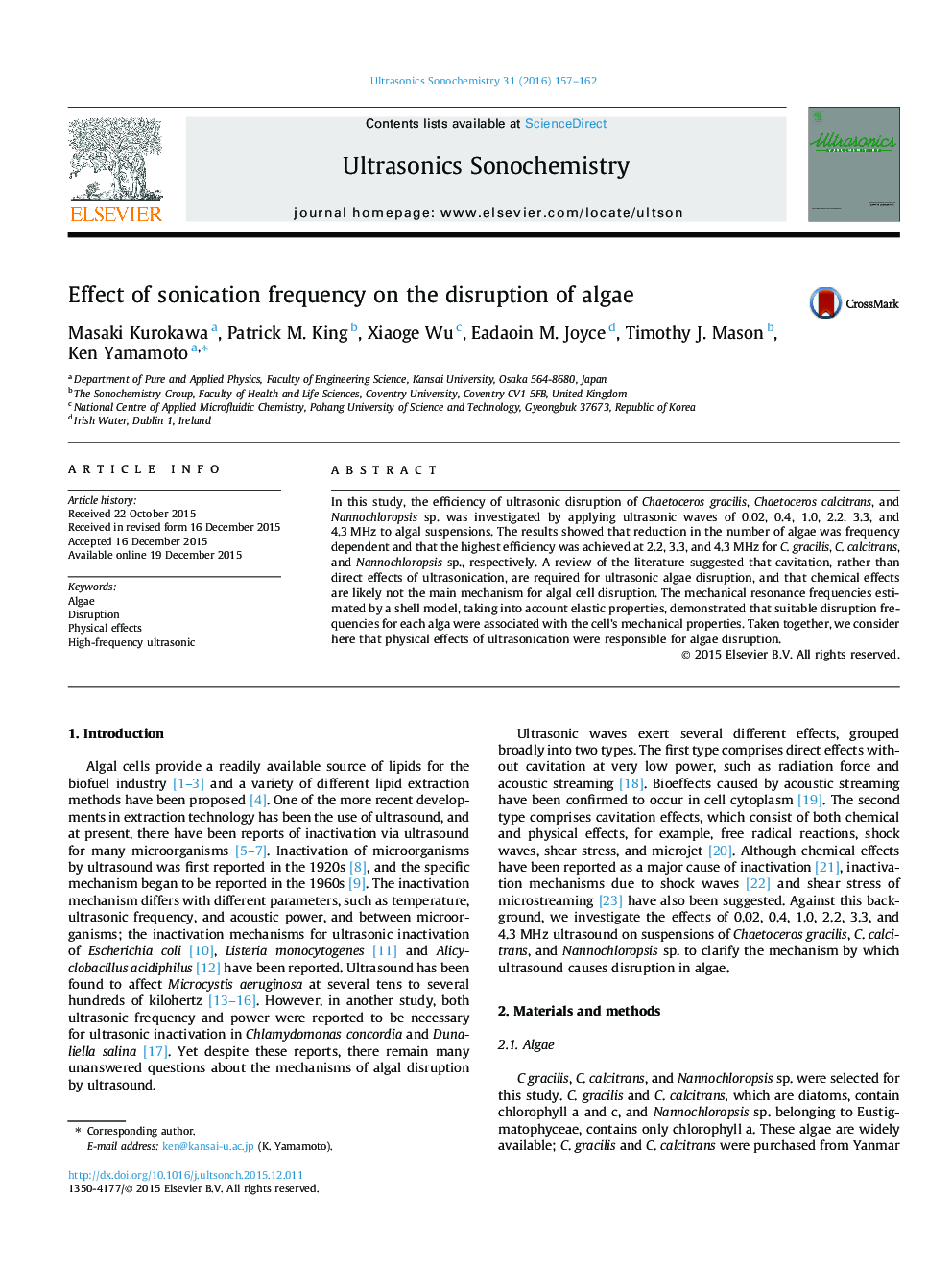| کد مقاله | کد نشریه | سال انتشار | مقاله انگلیسی | نسخه تمام متن |
|---|---|---|---|---|
| 1265658 | 1496873 | 2016 | 6 صفحه PDF | دانلود رایگان |
• The disruption of algae is frequency dependent and algae specific.
• The resonance frequencies of algae are calculated using elastic modulus measures.
• Cavitation bubbles are necessary for the algae disruption process.
• Chemical effects are not the main mechanism for algal cell disruption.
• Suitable disruption frequencies are associated with the cell’s mechanical properties.
In this study, the efficiency of ultrasonic disruption of Chaetoceros gracilis, Chaetoceros calcitrans, and Nannochloropsis sp. was investigated by applying ultrasonic waves of 0.02, 0.4, 1.0, 2.2, 3.3, and 4.3 MHz to algal suspensions. The results showed that reduction in the number of algae was frequency dependent and that the highest efficiency was achieved at 2.2, 3.3, and 4.3 MHz for C. gracilis, C. calcitrans, and Nannochloropsis sp., respectively. A review of the literature suggested that cavitation, rather than direct effects of ultrasonication, are required for ultrasonic algae disruption, and that chemical effects are likely not the main mechanism for algal cell disruption. The mechanical resonance frequencies estimated by a shell model, taking into account elastic properties, demonstrated that suitable disruption frequencies for each alga were associated with the cell’s mechanical properties. Taken together, we consider here that physical effects of ultrasonication were responsible for algae disruption.
Journal: Ultrasonics Sonochemistry - Volume 31, July 2016, Pages 157–162
